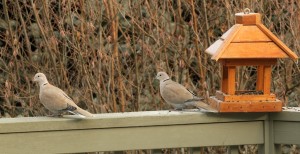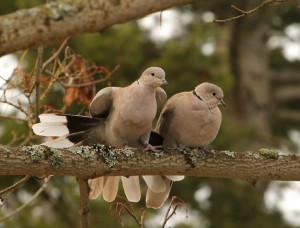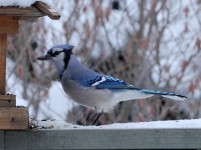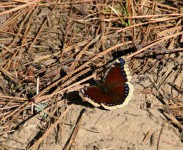When thinking of invasive species, one often thinks of weeds. But some birds also qualify as invasive, most notably European starlings, house finches, English sparrows and rock pigeons. In the last few decades, another bird has invaded and colonized the United States faster than any other bird species–the Eurasian collared-dove.
Slightly larger than a mourning dove, Eurasian collared-doves have a broad, square tail and a black collar. The rhythmic coo of the Eurasian collared-dove is slightly lower in pitch than a mourning dove. Both the male and female Eurasian collared-dove are similar in appearance.
The Eurasian collared-dove has a long history of being an invasive bird. Originally native to the Bay of Bengal region (India, Sri Lanka, Myanmar) in the 1600’s, the Eurasian collared-dove spread towards Europe and by the 1900’s was found throughout Europe.
Then in the 1970’s, the Eurasian collared-dove was introduced to the Bahamas (either by the escape or release of pets). By the 1980’s, the dove had dispersed to the Caribbean and southern Florida.
From there, the Eurasian collared-dove invaded the United States in a northwesterly direction and reached Oregon by the end of the 1990’s. By 2005, the Audubon Christmas Bird Count recorded the dove in 32 states and four Canadian provinces (British Columbia, Alberta, Saskatchewan and Ontario).
Eurasian collared-doves spread quickly because they prefer urban and suburban areas which have been expanding with the growth of the human population. The doves favor highly-modified landscapes over forested landscapes and feed on seeds, grains and occasionally berries and small invertebrates.

Eurasian collared-doves are relative newcomers to Boundary County, Idaho and are frequent visitors to bird feeders
Their dispersal method is described as “leapfrog” or “jump and backfill”. Instead of gradually expanding their range, Eurasian collared-doves fly, sometimes hundreds of miles, to a suitable location. Then as the newly established population grows, it expands and eventually colonizes the area between the two locations.
Mourning doves have expanded their range across North America but in a gradual fashion. Mourning doves are native to North America and have gradually expanded northward into the northern United States and Canada.
Eurasian collared-doves can rapidly expand because of their prolific breeding. Depending on the climate, doves can raise three to six broods annually with two eggs per brood.
They readily feed at bird feeders, in barnyards and around silos with spilled grains. Unlike other invasive species, Eurasian collared-doves haven’t negatively impacted native dove populations in warmer regions according to Cornell Lab of Ornithology researchers. With the recent expansion to colder regions, researchers are waiting to see if they compete with native doves.
The Eurasian collared-dove is anticipated to expand farther into Canada and New England as the population expands, leading researchers to believe it may become the “beige starling” of the United States.





